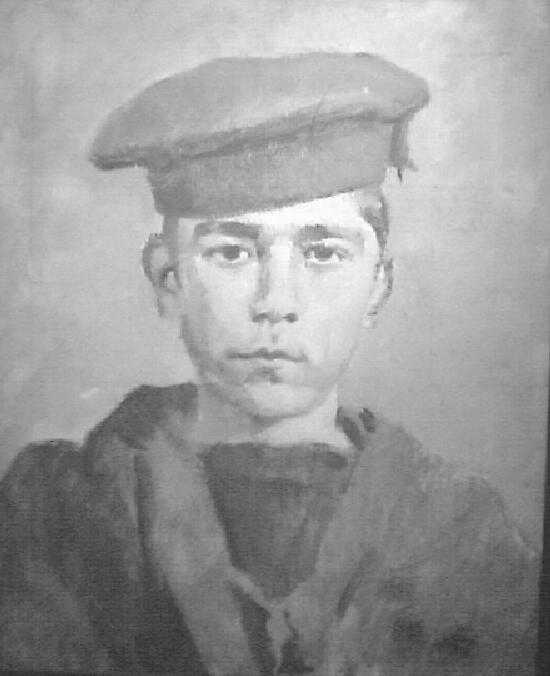
John Travers Cornwell VC Boy 1st Class (1900-16)

Figure 1.--mbrose McEvoy (Britain, 1878-1927) painted a portrait of John Travers Cornwell VC Boy 1st Class (1900-16). The portrait was painted after the boy's death. Cornwell was killed about 1916, but the portrait was painted about 1918-19. This painting was part of an intended series of portraits of Victoria Cross holders commissioned from McEvoy, a task he never completed. .
|
Ambrose McEvoy (Britain, 1878-1927) painted a portrait of John Travers Cornwell VC Boy 1st Class (1900-16). The portrait was painted after the boy's death. Cornwell was killed about 1916, but the portrait was painted about 1918-19. This painting was part of an intended series of portraits of Victoria Cross holders commissioned from McEvoy, a task he never completed. Cornwell was a 16-year-old forward gun sightsetter on HMS Chester. He was involved in the Battle of Jutland (May 31, 1916). ComweII remained at his post despite fatal injuries. His portrait became the icon for this complex and ambiguous battle. Cornwell was a perfect example both to smalI boys on how to serve their country, and to
those adults who had failed to recognise the importance of duty and self-sacifice at a time of mass unionisation, strikes, and suffragette protest.
Portrait
Ambrose McEvoy (Britain, 1878-1927) painted a portrait of John Travers Cornwell Victoria Cross (VC) Boy 1st Class (1900-16). The portrait was painted after the boy's death. HBC has not yet developed detailed information on this artist. McEvoy painted John in his Royal Navy uniform (figure 1). This painting was part of an intended series of portraits of Victoria Cross holders commissioned from McEvoy, a task he never completed.
Parents
Childhood
John was a Cheshire lad. One account written for childr suggess that Cheshire folk are strong, brave and idealistic people. John lived in the city of Chester. The county borders
Lancashire.
Eduction
Scouting
John was a scout before joining the Royal navy and fighting in the Battle of Jutland.
Royal Navy
The Royal Navy in the 1910s was sill accepting boys for active service. There were boys younger than John in the Navy. I am not sure just how old John was when he entered the Navy.
Battle of Jutland
The Battle of Jutland was the most important naval engagement of World War I, arguably the most important battle of the War. Jutland was the only full-scale engagement between the British Grand Fleet and the German High Seas Flet. It was a battle in which Britain could have lost the war in a single day. Cornwell was killed about 1916, but the portrait was painted about 1918-19. Cornwell was a 16-year-old forward gun sightsetter on HMS Chester. He was involved in the Battle of Jutland (May 31, 1916). ComweII remained at his post despite fatal injuries. His portrait became the icon for this complex and ambiguous battle.
Example
Cornwell was a perfect example both to smalI boys on how to serve their country, and to
those adults who had failed to recognise the importance of duty and self-sacifice at a time of mass unionisation, strikes, and suffragette protest.
HBC

Navigate the Boys' Historical Clothing Web Site:
[Return to Main World War I people page]
[Return to Main military style page]
[Introduction]
[Activities]
[Biographies]
[Chronology]
[Clothing styles]
[Countries]
[Bibliographies]
[Contributions]
[Essays]
[FAQs]
[Glossaries]
[Satellites]
[Tools]
[Boys' Clothing Home]
Created: June 8, 2003
Last updated: June 8, 2003



